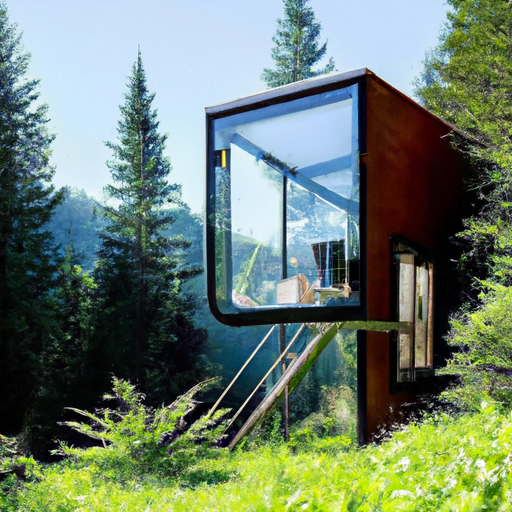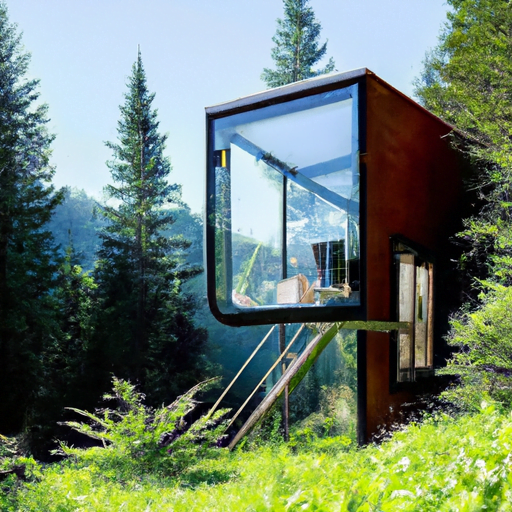I’ve always been fascinated by the idea of living off-grid, away from the hustle and bustle of modern society. But little did I know, there’s more to it than just disconnecting from the grid. As I began my research, I soon discovered that there are actually different types of off-grid lifestyles, each with its own unique characteristics and philosophies. From homesteading to eco-village living, it’s a whole world of alternative living waiting to be explored. With this question in mind, I delve deeper into the realm of off-grid living to uncover its various types and what sets them apart.

Off-grid Lifestyles
Living off-grid refers to a lifestyle where individuals or communities choose to disconnect from public utility services, such as electricity, water, and gas, and instead rely on self-sustainable methods for their basic needs. This means generating their own power, sourcing their own water, and growing their own food. Typically, people who embrace an off-grid lifestyle aim to reduce their environmental impact, become more self-sufficient, and gain a greater sense of independence. While there are certainly challenges and trade-offs associated with living off-grid, there are also numerous advantages that make it an appealing choice for many.
What is an off-grid lifestyle?
An off-grid lifestyle involves disconnecting from the traditional centralized systems that supply electricity, water, and gas to homes and communities. Instead, individuals or communities generate their own power through renewable energy sources like solar panels or wind turbines. They rely on alternative methods of water supply, such as rainwater harvesting or well systems. They also practice sustainable farming and gardening techniques to produce their own food. Essentially, living off-grid means taking control of one’s own basic needs and reducing dependency on external resources.
Advantages of living off-grid
Living off-grid offers a range of advantages. Firstly, it provides individuals with greater energy independence. By generating their own power through renewable sources, they are not subject to power outages or fluctuations in energy prices. This can lead to significant cost savings in the long run, as well as a reduced environmental footprint. Additionally, off-grid living encourages self-sufficiency. Individuals can cultivate their own food, source their own water, and create a sustainable lifestyle that is less reliant on external systems and resources. This can foster a sense of empowerment and resilience in the face of unforeseen circumstances. Furthermore, off-grid living often promotes a stronger connection to nature and a simpler way of life. Away from the hustle and bustle of urban areas, individuals can enjoy the tranquility and beauty of their surroundings while also minimizing their impact on the environment.
Disadvantages of living off-grid
While the benefits of living off-grid are undeniable, it is important to acknowledge the challenges and disadvantages as well. One major hurdle is the upfront cost of setting up an off-grid system. Investing in renewable energy sources, water collection infrastructure, and sustainable farming practices can require a significant financial commitment. Additionally, living off-grid often involves a steep learning curve. Individuals must acquire new skills and knowledge in areas such as solar power, water management, and agriculture. This can be time-consuming and demanding, especially for those without prior experience. Moreover, off-grid living may pose logistical challenges. Depending on the chosen location, access to amenities and services such as healthcare facilities, schools, and grocery stores may be limited. Lastly, living off-grid can be isolating. The remoteness of some off-grid locations and the reduced social interactions may not suit everyone’s preferences or lifestyle.
Types of Off-grid Lifestyles
The off-grid lifestyle encompasses various approaches and practices. Let’s explore some of the most common types of off-grid living to get a better understanding of the diversity within this lifestyle.
1. Homesteading
Homesteading involves self-sufficient farming and living off the land. Homesteaders typically cultivate their own food through gardening, raise livestock for meat and dairy products, and use renewable energy sources like solar power. The focus is on producing as much of their own food as possible and minimizing dependence on outside resources.
2. Sustainable Living
Sustainable living focuses on reducing environmental impact through practices such as off-grid energy systems, water conservation, and permaculture gardening. Off-grid energy sources can include solar panels, wind turbines, or micro-hydro systems. Water conservation is achieved through rainwater harvesting and efficient water usage. Permaculture gardening involves creating a sustainable and diverse ecosystem that minimizes the need for outside inputs and maximizes food production.
3. Wilderness Living
For those seeking a more adventurous off-grid lifestyle, wilderness living involves residing in remote areas and relying on hunting, gathering, and fishing for food. Residents build shelters using natural materials found in the wilderness and develop survival skills to navigate the challenges of living in untamed environments.
4. Tiny House Living
Tiny house living emphasizes minimalism and reducing one’s carbon footprint by residing in small, mobile homes. These homes are often designed with off-grid utilities in mind, such as composting toilets and solar panels. The compact size of these houses not only reduces energy consumption and maintenance but also encourages a simplified and clutter-free lifestyle.
5. Mobile Living
Mobile living involves living in recreational vehicles (RVs) or campervans, allowing individuals to easily travel and explore different locations. This lifestyle offers flexibility and freedom to move, accompanied by a reduced reliance on traditional infrastructure. Since space and resources are limited, individuals must prioritize efficiency and compact living arrangements.
6. Earthship Living
Earthship living revolves around sustainable and self-sufficient homes built from recycled materials such as tires, glass bottles, and earth. Designed to be off-grid, these homes incorporate features like solar power, water harvesting systems, and thermal mass for temperature regulation. Earthships are known for their innovative and eco-friendly designs, making them an attractive option for those who value sustainability.
7. Floating Homes
Living on boats or floating houses provides a unique off-grid experience. Water-based communities offer a sense of camaraderie and the ability to navigate different locations while enjoying the benefits of off-grid living. Floating homes often utilize renewable energy sources like solar panels and employ off-grid plumbing systems for water supply.
8. Cabin Retreats
Cabin retreats are synonymous with cozy and secluded off-grid living. These small structures, often nestled in nature, allow individuals to escape the hustle and bustle of daily life while still enjoying the comforts of a shelter. Cabin retreats can be equipped with various off-grid amenities, such as solar power and water collection systems.
9. Eco-village Communities
Eco-village communities are groups of individuals who come together to create intentional, sustainable living environments. These communities often share resources and responsibilities, fostering a strong sense of community and collaboration. Residents strive to live in harmony with nature, using renewable energy sources and practicing sustainable agriculture.
10. Futuristic Off-grid Lifestyles
The future of off-grid living is constantly evolving, with new technologies and innovations pushing the boundaries of what is possible. Futuristic off-grid lifestyles incorporate cutting-edge technology, energy-efficient homes, smart automation, and integration of renewable energy sources. These innovative approaches aim to maximize self-sufficiency and minimize environmental impact.
In conclusion, off-grid living encompasses a diverse range of lifestyles, each with its own unique advantages and challenges. Whether it’s homesteading, sustainable living, or futuristic off-grid lifestyles, individuals who choose this path seek to reduce their environmental footprint and cultivate a greater sense of self-sufficiency. By embracing off-grid living, people can reconnect with nature, decrease reliance on traditional infrastructure, and take control of their basic needs in a more sustainable and independent way.




